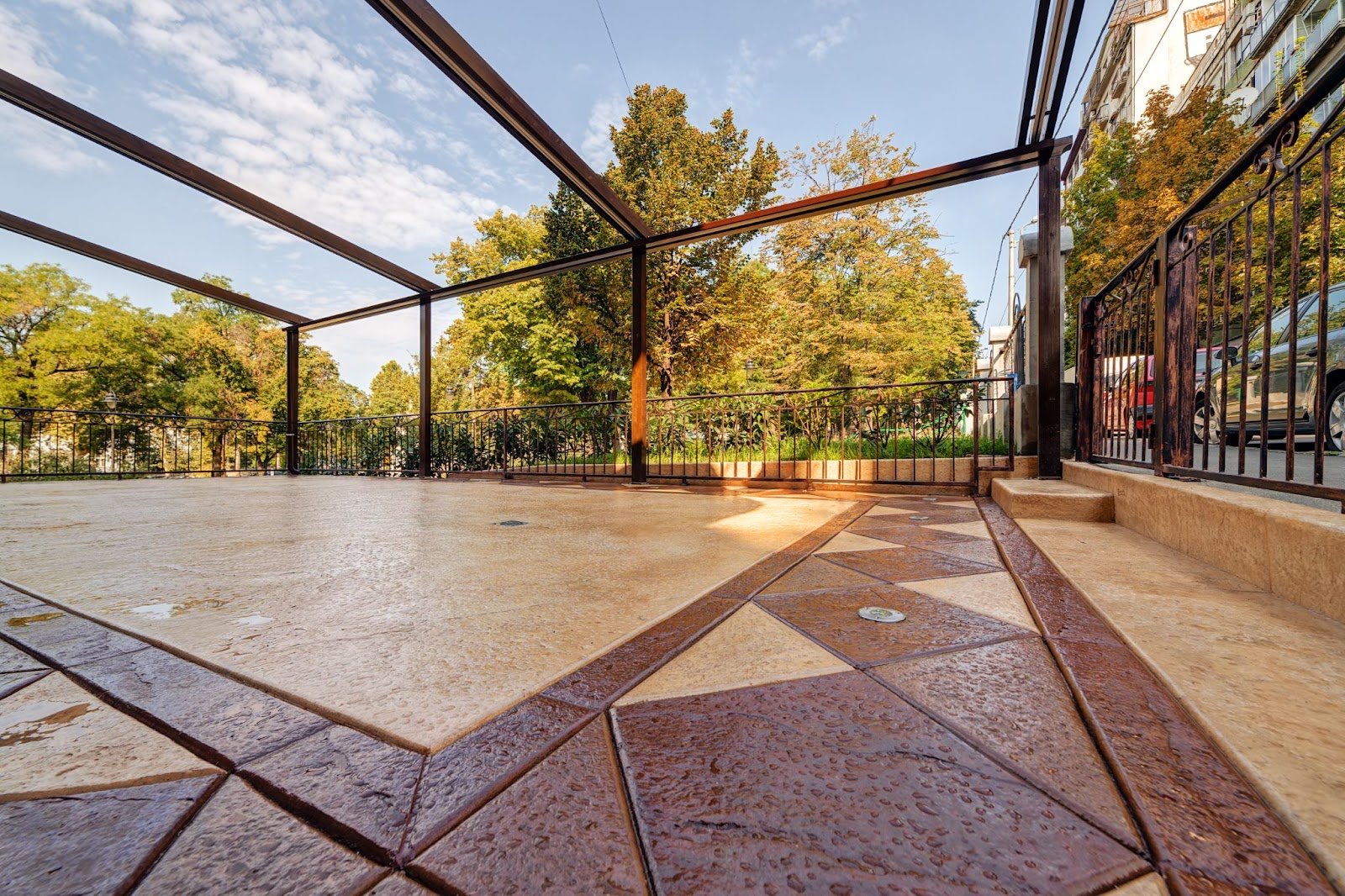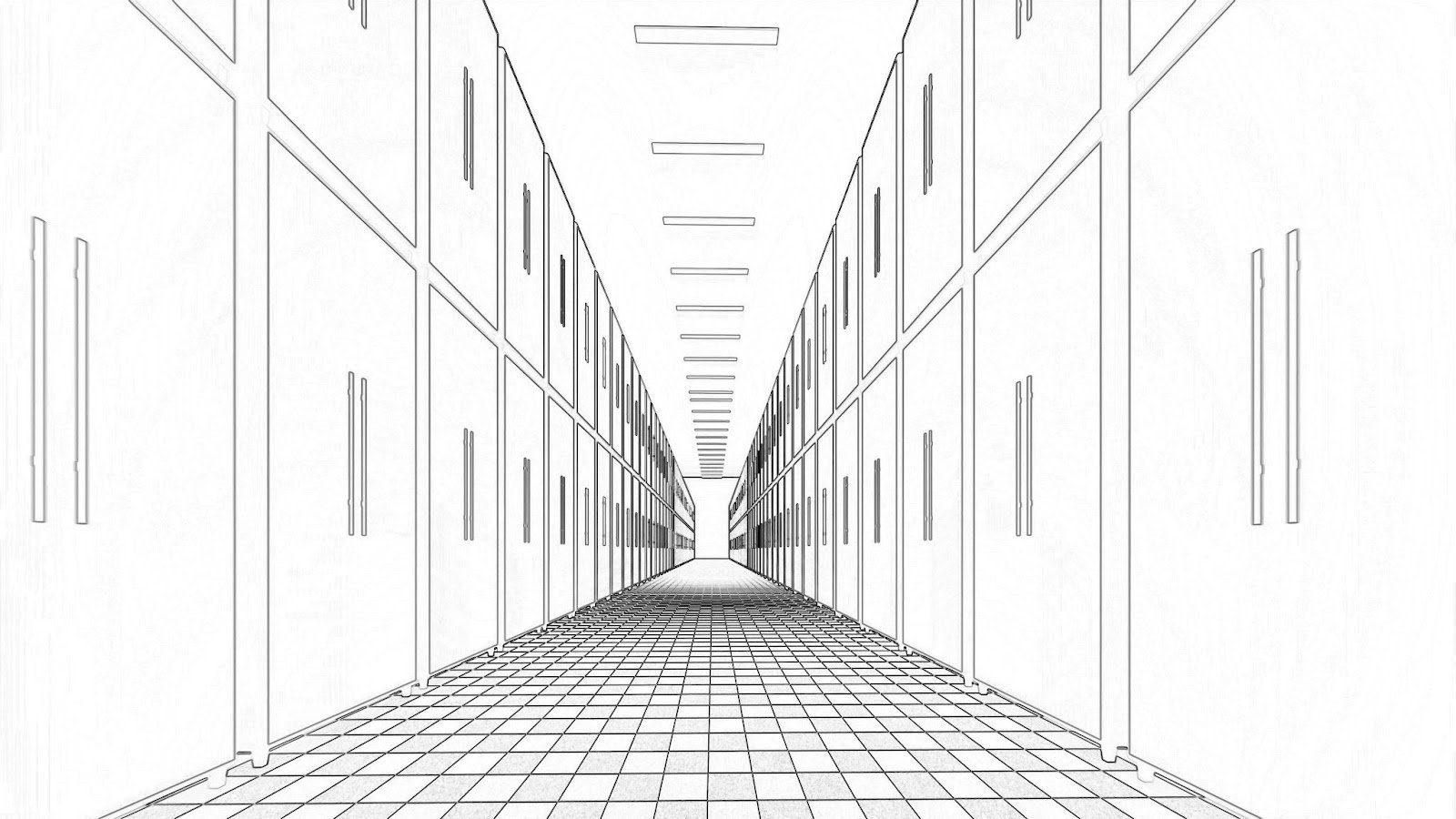Architectural Concrete: A Full Guide
Architectural Concrete: A Full Guide
When selecting a material for architecture, concrete is often the go-to choice. In particular, architectural concrete is renowned for its durability and resilience against even the harshest elements.
This guide will show you why architectural concrete is such a great option and what special care needs to be taken when selecting materials, forming, and placing, as well as when performing regular maintenance.
Introduction to Architectural Concrete
Architectural concrete is a type of concrete that elevates the limited function of decorative concrete. It goes beyond serving a purely structural or aesthetic purpose by combining both form and function.
Delivering this perfect combination of practicality and visual appeal makes it an essential material in modern designs.
Architectural concrete is purposefully made to be exposed in the final construction, seamlessly integrating with the building's design and creating a visually striking impact that captivates the observer's attention.
It has the ability to bring style to any structure, be it commercial or residential, utilizing different finishes and textures to create inspired structures.
Benefits of Architectural Concrete in Design
Architectural concrete offers a myriad of benefits in design, making it a popular choice among architects and designers. Here's a detailed look at these advantages:
Aesthetic Appeal
Architectural concrete is often chosen for its ability to enhance the visual appeal of a structure. Its malleability allows it to be formed into a wide variety of coatings, shapes, textures, and sizes, enabling architects and designers to create unique, eye-catching elements that can serve both functional and decorative purposes.
This aesthetic flexibility makes architectural concrete a preferred material for many design-driven projects, as it can adapt to various styles and themes, from modern minimalism to rustic charm.
Durability
Durability is a key feature of architectural concrete. With its exceptional strength and impressive longevity, concrete construction stands the test of time, remaining highly resistant to the effects of weathering and degradation.
Whether facing harsh climates or frequent use, architectural concrete continues to showcase its remarkable durability, making it an excellent choice for a wide range of construction projects.
Low Maintenance
Architectural concrete, with its inherent durability, demands significantly less maintenance when compared to other design materials like wood and steel — you won’t have to worry about rot or rust.
Its long-lasting nature and resistance to weathering and deterioration make architectural concrete construction excellent for structures that require longevity and minimal upkeep.
Cost-Effective
While the initial costs of architectural concrete may be higher than some other materials (due to the specialized techniques used in its production and placement), the long-term benefits will result in cost savings.
Resistance to Mechanical Damage
Architectural concrete is highly resistant to mechanical damage, such as impacts or abrasions. This makes it an excellent choice for high-traffic areas or spaces that require robust materials.
Related: Building Envelope Systems
Uses of Architectural Concrete
Architectural concrete has a wide range of applications due to its aesthetic appeal, durability, and adaptability.
Building Facades
Architectural concrete, like Site Cast or Precast concrete wall panels are commonly chosen for building exteriors due to their exceptional durability and resistance to severe weather conditions. Exposed structural concrete can also provide both long-lasting protection and visual appeal.
Its versatility allows architectural concrete to be shaped and molded into various intricate designs and patterns, allowing for beautiful facades.
This modern and industrial material adds character and sophistication to buildings, making them stand out in any urban landscape.
Bridges and Infrastructure
Architectural concrete is a popular choice for infrastructure projects like bridges, dams, and tunnels due to its exceptional strength and durability, making it highly resistant to wear and tear.
It provides structural integrity, and its aesthetic qualities can also make these vital structures more visually appealing.
The versatility of architectural concrete allows for the creation of unique and intricate designs, ensuring that infrastructure projects stand out while maintaining their functionality and longevity.
Interior Design Elements
Exposed interior concrete building structure adds interesting architectural expression to building interiors. From sleek and modern floors to stunning sculptural staircases, architectural concrete provides a durable and versatile solution.
Not only can it be used for flooring, but its adaptability allows it to seamlessly integrate with various interior design themes, whether you prefer a rustic, industrial aesthetic or a clean and contemporary look.
Learn more: Sustainability in Commercial Interior Design
Landscaping Features
Architectural concrete is a highly sought-after choice for outdoor spaces when creating features such as driveways, walkways, concrete walls, and other functional landscaping features.
It proves to be the perfect material for these frequently traversed areas, withstanding heavy foot traffic and the test of time.
Artistic Structures and Monuments
Architectural concrete’s usage flexibility makes it a highly sought-after material for creating sculptures, monuments, and other artistic structures.
With its ability to be molded into intricate designs and finished in a myriad of ways, architectural concrete provides endless possibilities to bring forth captivating visual effects that are genuinely one-of-a-kind.
Types of Architectural Concrete
There are several types of architectural concrete and concrete finishes available, each offering its own aesthetic qualities:
Exposed Aggregate Concrete
Exposed aggregate is a decorative form of concrete achieved by removing the top layer of cement paste to reveal the aggregate beneath.
This process uncovers coarse aggregates such as pebbles, rocks, and sand, creating an appealing textured finish. The exposed aggregate can be either mixed into the cement or pressed into the top of the wet concrete.
Stamped Concrete
Stamped concrete refers to a decorative technique applied to concrete surfaces to create patterns, textures, or imitations of other materials like:
Brick
Slate
Flagstone
Wood
Tile
It involves using stamps or form liners to imprint these designs onto the concrete surface during the pouring and curing process.
Colored Concrete
Colored concrete, or pigmented concrete, is a type of architectural concrete that incorporates mineral oxide pigments to achieve a desired color.
Unlike traditional gray concrete, colored concrete allows for a wide range of hues and tones, adding visual interest and enhancing the aesthetic appeal of architectural designs.
This makes it particularly useful for facades, exterior finishes, and artistic installations.
Polished Concrete
Polished concrete is a type of finished concrete that undergoes a series of mechanical grinding and polishing steps (such as sandblasting and application of surface finishes) to achieve a smooth, glossy finish.
It is commonly used in architectural applications due to its durability, aesthetic appeal, and versatility. Some of the most common uses of polished concrete in architectural applications include flooring, walls, and facades.
Critical Aspects of Architectural Concrete
Understanding the critical aspects of architectural concrete is essential to unlocking its full potential in various applications. Two key factors to consider are material selection and forming techniques.
Material Selection
Choosing the right materials for architectural concrete involves more than just selecting the aggregates and cement.
It also includes considering the types of admixtures to use, such as water reducers, pigments, retarders, or accelerators, depending on the desired properties of the finished product.
Selection of concrete materials dramatically impacts the finish. For example, aggregates and admixtures can affect the final look and feel of the concrete.
Smooth pebbles give a different texture compared to sharp, angular stones. The choice of cement color can range from traditional gray or white to colored variants, dramatically altering the visual impact of the concrete (and eliminating the need for paints and other finishes).
Forming Techniques
There's a vast range of forming techniques that can be employed in the creation of architectural concrete. These can significantly impact the finished product's texture, shape, and overall aesthetic.
Cast-In-Place Concrete
Cast-in-place concrete is poured directly into formwork on-site, allowing for a high degree of flexibility and customization in shape and form.
Precast Concrete
On the other hand, precast concrete is manufactured off-site in a factory before being transported and installed at the construction site. This method ensures consistent quality and finish, and can be a more efficient choice for large-scale projects.
Sprayed Concrete
Lastly, sprayed concrete is applied by being pneumatically projected at high velocity onto a surface. This technique is handy for complex forms or structures, as well as concrete repair.
Considerations During Maintenance
Maintenance of architectural concrete, while generally low-key, does require some consideration to preserve its aesthetic and structural integrity over time.
Here are some key aspects to consider:
Mix Design
The mix design of architectural concrete plays a crucial role in determining its maintenance requirements.
The composition of the mix, including the type and proportion of cement, aggregates, water, and any admixtures, directly impacts the concrete's durability, strength, permeability, and resistance to environmental factors.
These all can affect its long-term upkeep needs.
For instance, a poor mix design may lead to weaker concrete prone to defects like shrinkage cracks, efflorescence, and spalling. This undoubtedly increases maintenance requirements.
On the other hand, certain admixtures and surface treatments can be used to enhance the concrete's properties.
For example, air-entraining admixtures can improve freeze-thaw durability, while water-reducing admixtures can increase strength and decrease permeability, both of which extend the concrete's lifespan and lower its maintenance needs.
Design of Steel Reinforcement
Steel reinforcement in architectural concrete is a critical factor when considering the maintenance requirements of these structures.
This is largely due to the complementary strengths and weaknesses of the two materials.
Concrete is strong against compression forces but has low tensile strength and ductility. On the other hand, steel has high tensile strength and can withstand shear and bending forces, compensating for concrete's deficiencies.
Steel corrosion within concrete is a common sign of deterioration and loss of load-bearing capacity. Thus, when designing the reinforcement, factors such as the quality of the steel, concrete mix, and environmental conditions should be considered to minimize corrosion and extend the structure's lifespan.
Reinforced concrete also shows signs of distress (such as cracking before failure) thanks to the ductility imparted by the steel reinforcement. This can be beneficial from a maintenance perspective, as it allows for early detection and repair of potential issues.
Specification and Layout of Control Joints
Control joints, also known as contraction joints, are strategically-placed gaps in concrete structures allowing them to expand and contract (due to temperature changes and other external factors) without causing damage or cracking.
They are crucial components to consider during the maintenance of architectural concrete for several reasons:
Preserving Structural Integrity
Firstly, control joints play a vital role in preserving the structural integrity of a concrete surface. Without these joints, natural expansion and contraction could lead to unsightly and potentially dangerous cracks.
Directing Where the Concrete Will Crack
Secondly, control joints help to direct where the concrete will crack, allowing it to do so in a controlled and predictable manner. This is particularly important in architectural concrete, where aesthetics are as essential as functionality.
Maintaining these joints is critical because if they are not adequately sealed — or if the sealant deteriorates over time — water, dirt, and debris can penetrate the concrete. This can cause damage such as freeze-thaw deterioration or corrosion of the reinforcement.
Design to Limit Deflection
Concrete structures are designed to limit deflection (bending under load) to prevent damage or failure. Over time, increased loads or changes in the building's use can alter these deflections.
Inspections can help identify any changes early and allow for corrective action to be taken.
Design for Repairability
Despite its durability, architectural concrete may occasionally need repairs due to damage or wear and tear. The structure should be designed with repairability in mind, allowing for easy access to all parts and consideration of how repairs will affect the overall appearance.
Regular maintenance includes identifying areas needing fixing and addressing them promptly to prevent further degradation.
Conclusion
Architectural concrete is a versatile material with many advantages, including strength, longevity, and aesthetic appeal. Its maintenance requires consideration of the:
Mix design
Steel reinforcement design
Control joint specification and layout
Deflection
Repairability
With proper care and maintenance, architectural concrete can provide durable and attractive surfaces for years to come.
When considering architectural concrete for any project, it is essential to consult with an experienced company like ZP Architects & Engineers, who can help ensure the right mix design, reinforcement design, and other considerations are taken into account.
With the appropriate care and attention to detail, these structures will remain beautiful and functional for decades.
Contact us today for all your architectural design and engineering needs.








